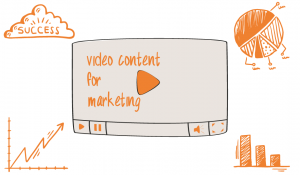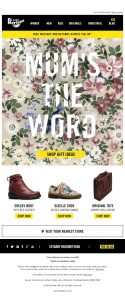By Nathan Furr and Susannah Harmon Furr

Stories awaken possibility because they inspire curiosity and help us imagine what might be possible. Ursula K. Le Guin, one of the great science fiction writers, wrote stories to “dislodge my mind, and so the reader’s mind, from the lazy, timorous habit of thinking that the way we live now is the only way people can live.” Stories also motivate us to take action, even in the face of uncertainty. Indra Nooyi, the CEO who led Pepsi through a massive health and sustainability transformation, told us that stories were her primary tool for change: “I could fall back on a lot of personal stories, you know, talk about my own experiences growing up with water shortages and electricity shortages . . . examples of issues related to health and wellness that were very personal and stark.”
When facing uncertainty, the most useful stories encourage imagination, hope, curiosity, and purpose. If we can imagine a narrative about our personal uncertainty with characters, conflict, and resolution, we are on our way to a powerful reframing of the possibility at hand. When Clare and David Hieatt moved back to the tiny town of Cardigan, Wales, they could feel the negative effects caused by the collapse of the jeans industry when jobs went overseas twenty years earlier. For David, this kind of loss felt personal because a similar closure happened when he was a boy.
He recalls riding the school bus and seeing the dirty faces of the miners returning from work, until one day, when the mine closed, “they were gone. Just like that, they vanished.”
The Hieatts were determined to do something to change their town for the better. When David tells the story, he starts with his beliefs: “I’ve always loved business, but . . . I’ve always thought a business could be a tool for some kind of change you believed in.” Upon discovering that Cardigan had been the headquarters of jeans manufacturing in the U.K., leaving hundreds of skilled makers behind, he knew what they were going to do: Instead of making low-cost jeans, they would make a great pair of jeans, sustainably, get people their jobs back, and show that “you can make in Britain and you can do it really, really well.”
But how do you get people to believe in something that already failed? Again, use your story. When it’s told truthfully, with heart and purpose, customers rally with your brand and respond. The Hieatts’s “getting people their jobs back” story is powerful because of the authenticity of its characters, conflict, purpose, and optimism. But it also sells their jeans. Every year, they are able to hire back more of the “grand masters,” and customers have responded. Even Meghan Markle, the Duchess of Sussex, wore a pair, promoting their cause. Today the Hieatts operate from the same factory that shut down two decades ago, and from that remote place at the edge of the sea they inspire a network of influence and change.
According to neuroscience studies, stories have a remarkable ability to change our thinking, for example by demonstrating how our minds literally sync with each other as we hear a story. But decades before neuroscience proved it, philosopher Søren Kierkegaard wrote about the importance of imagining what we can do as the first step in eventually taking action. Kierkegaard believed deeply in our potential, if we could just imagine it, writing that “there is nothing with which every [person] is so afraid as getting to know how enormously much he/she is capable of doing and becoming.”
It is an inspiring thought and worth reflecting on, given Kierkegaard’s conclusion after a lifetime of reflection on human possibility: “If I were to wish for anything, I should not wish for wealth and power, but for the passionate sense of the potential, for the eye which, ever young and ardent, sees the possible.”
How can you get started on creating your own story to guide you through uncertainty? Begin by paying attention to what social entrepreneur Mike Smith calls “the tiny whisper that tells us we can do something incredible.”
Looking around his isolated, rural town of 2,000 people with a poverty rate above 40 percent, Smith heard that whisper. His idea was to create an indoor skate park that could serve as a resource for kids like the one he had been: creative, a bit rebellious, on the fringes but needing community. He didn’t even have a checkbook, but he assembled a group of advisers and started fundraising to support the park. Today, that skate park has welcomed over 10,000 skaters, served over 250,000 meals, and helped over 1,000 youth with its services. Smith’s many humanitarian projects are sponsored by major brands like Vans, Jostens, and Red Bull.
Reflecting on finding his story, Smith argues it’s about not traditional success metrics but finding what you are good at: “We have to ask what’s driving us. It cannot be money. [ . . . ] People always say do what you’re passionate about, [but] you should do what you’re good at, what you have a good skill set for. For me, it was gathering a community around an issue, networking, and speaking.”
Melinda Thomas, cofounder of multiple companies including Octave Bioscience, CardioDx, and ParAllele, and New York City’s first entrepreneur in residence, takes this advice a step further, arguing that you should systematically explore your strengths. Part of what helped her through the uncertainty of multiple startups—the “foggy whiteout conditions without a road map . . . [where] you don’t quite know what to do or how to move forward”—was having a sense of her skill set.
“Pay attention and be introspective,” she advises. “Take every test you can take. Myers-Briggs. Superpower. StrengthsFinder.” Pay attention to what resonates and then “pilot the hypotheses” in low-risk situations to build your confidence around what you like and are good at. It is on the back of these “certainties” that you have the strength to step into the unknown.
If you are struggling to find a story, trust curiosity. Journalist and author Elizabeth Gilbert recounts how after her fourth book, Eat Pray Love, sold 12 million copies, she set to work on another memoir. But when she finished, she concluded, “Truly, the book was crap. Worse, I couldn’t figure out why it was crap. Moreover, it was due at the publisher [and] I had absolutely no passion for writing. I was charred and dry. This was terrifyingly disorienting.”
A friend advised, “Take a break! Don’t worry about following your passion for a while. Just follow your curiosity instead.” Gilbert admits she was curious about gardening—not passionate, just curious—and so she spent the next six months planting vegetables. “I was pulling up the spent tomato vines when—quite suddenly, out of nowhere—I realized exactly how to fix my book. I washed my hands, returned to my desk, and within three months I’d completed the final version of Committed—a book that I now love.”
Curiosity is indeed a tiny whisper that we hear when we pay attention and that grows stronger when we follow it. Paul Smith grew up dreaming about and preparing to become a professional cyclist. But when a biking accident put him in the hospital for six months, he had to change course. He began to get curious about clothes, and when out of the hospital, he took a class on tailoring clothes. That led to a job on Savile Row and then to opening his own small store, a mere thirty square feet. Today he is an internationally recognized designer with stores all over the world.
It can be empowering to remember that whatever happens to us, our life is the story we tell from it. When we asked Benjamin Gilmour what led him to ride a motorcycle through Pakistan, save lives in an ambulance in Mexico City, and make films featured at Cannes and the Oscars, he simply said, “I grew up getting read to every night. . . . I love the stories where the protagonist makes remarkable choices, not the safe choice. . . . I wanted my life to be a remarkable story.”
Reflection and practice
A powerful story will encourage curiosity, help you imagine what’s possible, and create the desire to get you moving forward. Imagine your life as a shelf holding several books full of potential stories, and ask, “What story do I want to pull down off the shelf and read? What do I wish the main character of my story would do?”
It’s your turn to create a story to guide you through uncertainty. Here are some ways to start:
Excerpted adapted from The Upside of Uncertainty: A Guide to Finding Possibility in the Unknown by Nathan Furr and Susannah Harmon Furr with permission from Harvard Business Review Press. Copyright 2022 Harvard Business Publishing Corporation. All rights reserved.
Nathan Furr is an author and a professor at the INSEAD school in Paris. Susannah Harmon Furr is an entrepreneur, designer, art historian, and contrarian. They are the coauthors of including a coauthor of The Upside of Uncertainty.
(13)






